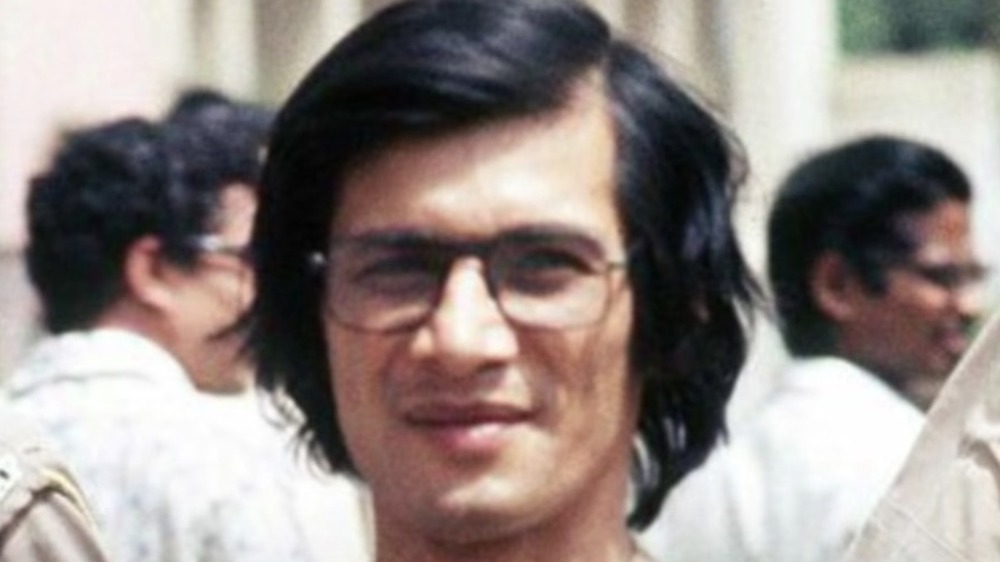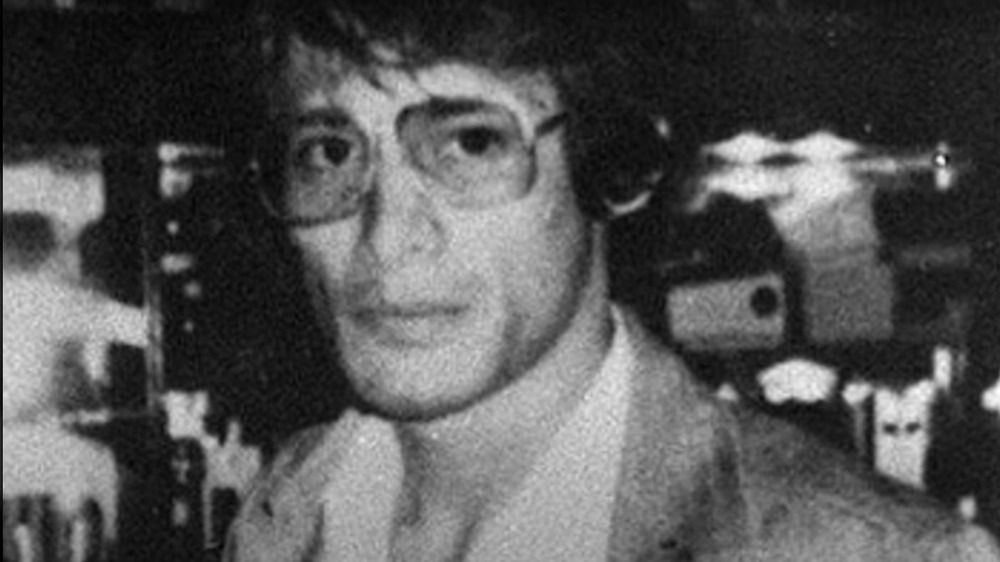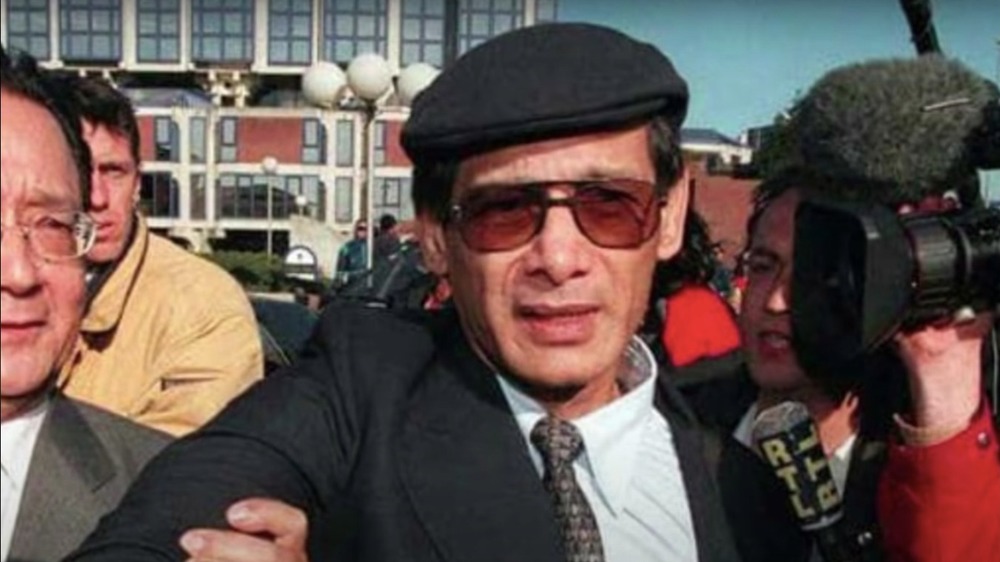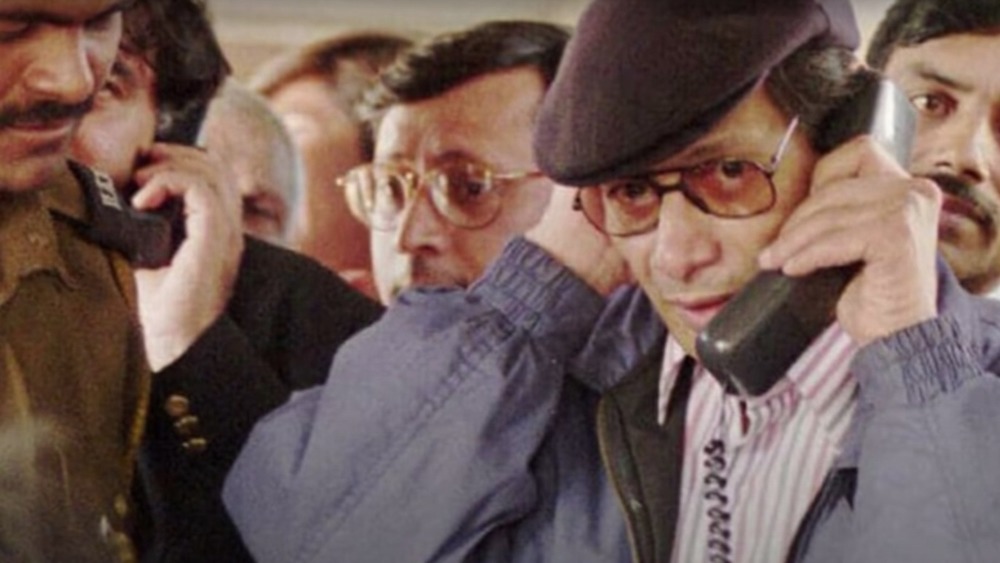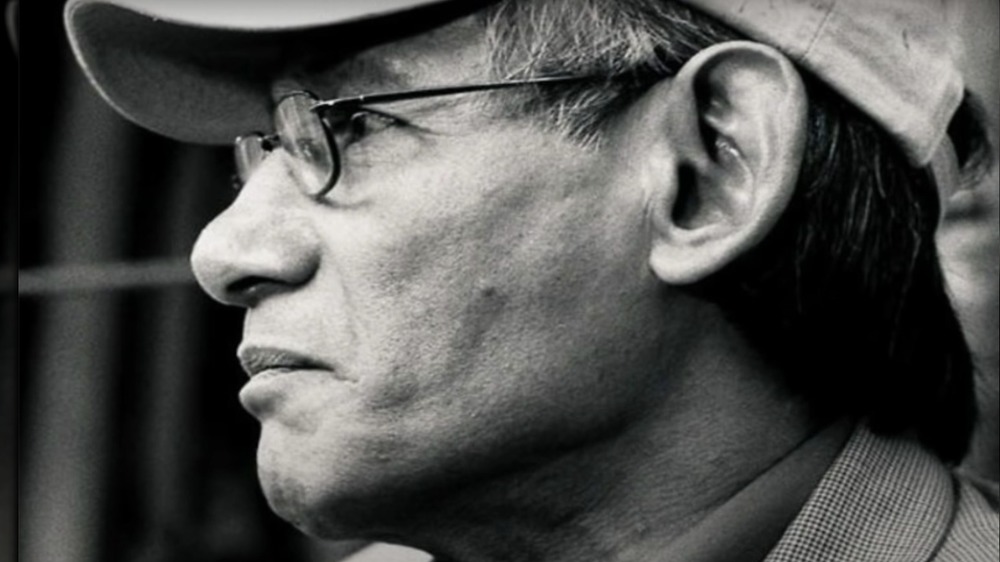The Dark Truth About Con Man And Killer Charles Sobhraj
It was the 1970s and the hippie trail was teeming with young, naïve members of the Western counterculture. Since the late 1950s, the overland tourist route had connected European cities with India and Thailand in the east, passing though countries now unthinkable as tourist destinations, such as Iraq, Iran, and Afghanistan. It was the perfect setting for one of the 20th century's most notorious serial killers, Charles Sobhraj, who is the subject of the BBC series The Serpent, set to premiere worldwide on Netflix on April 2, 2021.
Sobhraj was born in Saigon back when Vietnam was called French Indochina in 1944. His mother was a young Vietnamese woman who worked in bars and shops, and his father was a tailor from India who wanted nothing to do with his son. According to the BBC, this rejection caused Sobhraj to become bitter and spiteful, and perhaps contributed to the development of the vicious man he would become. "I will make you regret that you have missed your father's duty," he reportedly wrote in his diary. Sobhraj grew up to become a smooth-talking con man who would use his wiles to get what he wanted, from money to accomplices to passports to the keys to the prisons that held him captive. Let's take a look into the life and terrible crimes of the Serpent, Charles Sobhraj.
Charles Sobhraj's first murders were in Thailand
According to Crime and Investigation, Sobhraj had already gotten into trouble for burglary, car theft, gun smuggling, and more in France, Greece, Turkey, India, and Afghanistan, but his killing spree began in Bangkok, Thailand, in 1975. He started working as a drug dealer, but soon turned to a con that involved manipulation, drugging, and eventually murder. It was here that he met Marie-Andreé Leclerc, a French Canadian tourist who fell madly in love with him and tolerated his criminal activity and womanizing ways. Sobrhaj's MO involved "saving" Western tourists from situations he himself had created. He stole passports from a pair of former French police officers, then became their hero when he ended up "finding" them. He dosed another French tourist with a poison that made him think he had dysentery, then provided him with shelter and medical care, "helping" him get better. It was here that Sobhraj met Ajay Chowdhury, who would become his accomplice for years.
Sobhraj's first victim was a woman named Teresa Knowlton from Seattle, Washington. He offered to be her tour guide in the nearby resort city of Pattaya. Her burned body was later found by police. Not long after, the body of his next victim, Jannie Bollivar, was found drowned in a tidal pool in the Gulf of Thailand. She and another victim of his were found wearing floral bikinis, which earned him the nickname the Bikini Killer.
Thai police refrained from charging Sobhraj so as to not scare tourists away
Several others met their ends at the hands of Sobhraj in Thailand that year. He conned a pair of Dutch students, Henk Bintanja and his fiancée Cornelia Hemker, into trusting him after he poisoned them and then nursed them back to health. Their bodies were found in December. They had been strangled and burned. The body of Charmayne Carrou, the girlfriend of another victim of Sobhraj's who had come looking for her boyfriend, was also found that month — in a floral bikini.
After police put the cases of the girls in bikinis together, Sobhraj decided it was time to escape the heat, and he and Leclerc left Thailand using the passports they stole from Bintanja and Hemker. They went to Nepal, where a pair of Western tourists — Connie Bronzich and Laurent Ormond Carriere — were soon found murdered. Sobhraj and Leclerc then used their passports to get back into Thailand. They bailed to India for a bit, then came back to Thailand, and Sobhraj was interrogated in relation to the Bikini Killer murders, but the Thai police didn't want to take it too far, for fear of what an investigation might do to the country's tourism industry.
Sobhraj then went to Malaysia with Chowdhury, and the two stole a ton of precious gems, but Chowdhury never got to share in the spoils. He disappeared and his body was never found. It is believed that Sobhraj killed him.
Sobhraj slithered his way out of Indian jail, and extradition to Thailand
After hocking the jewels in Switzerland, Sobhraj and Leclerc returned to India to get back up to their old tricks. They recruited a pair of American tourists, then tried the poisoned meds trick. But they killed one man — a French tourist named Jean-Luc Solomon — and another group of victims caught on when the poison began to work too quickly. They brought the police's attention to Sobhraj, and the murder of the poisoned tourist sent him to prison for 21 years.
But Sobhraj had a problem. His sentence in India was going to be finished before the statute of limitations on his murders in Thailand was up, so he had to get creative. He had some clout in the Tihar prison due to his treatment of the guards (and a little help from some gems he snuck in), so he threw himself a big prison birthday bash to which he invited inmates and officers alike. He dosed the snacks with sleeping pills, and when the guards and most of the prisoners were asleep, he walked out like he owned the place.
The idea, however, wasn't to stay out of jail. Oddly enough, it was to get thrown back in for more time. His original sentence was to let him out while he could still be extradited to Thailand for his first murders, so he escaped in order to extend his sentence longer than the 20-year statute of limitations there.
Charlse Sobhraj made millions selling his story in France
That escape was just one of Sobhraj's several prison breaks from various penal institutions in Europe and Asia. He had already wiggled his way out of jails in Greece and Afghanistan. He once faked a case of appendicitis to get taken to a hospital, from which he made his escape after getting his totally healthy appendix removed, according to Scroll.in.
The India Times reports that his skills for slithering out of jail cells earned him the nickname "The Serpent." So no, his escape from Tihar wasn't his first. It was more like his magnum opus. It also earned him another decade behind bars, and when he was released in 1997, he no longer had to worry about facing the death penalty in Thailand. He then moved back to France, where he "retired" and cashed in on his outrageous life story. He charged hefty fees for interviews and made a killing (no pun intended) on film and book rights to his story. The BBC reported that he charged a French actor/producer $15 million to be able to tell his story.
Sobhraj arrested and jailed again, this time in Nepal
Charles Sobhraj may have a knack for getting out of prisons, but that's also because he's just so good or better at getting put in them. Had he stayed in France, he'd probably be a free man today, but instead, he returned to Nepal once again, and hit the casino. According to India Today, he was recognized by a journalist from the Himalaya Times at Casino Royale in Kathmandu. Sobhraj did his best to pass himself off as a regular tourist, but the journalist staked out his hotel for several days, and after some investigation confirmed that he was tracking the Serpent. He notified police, and two days later Sobhraj was arrested.
He was found guilty of the 1975 murders of Connie Bronzich and Laurent Ormond Carriere and sentenced to life in prison, a punishment he has yet to slither out of. However, he is believed to have been responsible over 20 murders of Western tourists in Nepal, Turkey, Hong Kong, Afghanistan, Thailand, and India over the decades.
